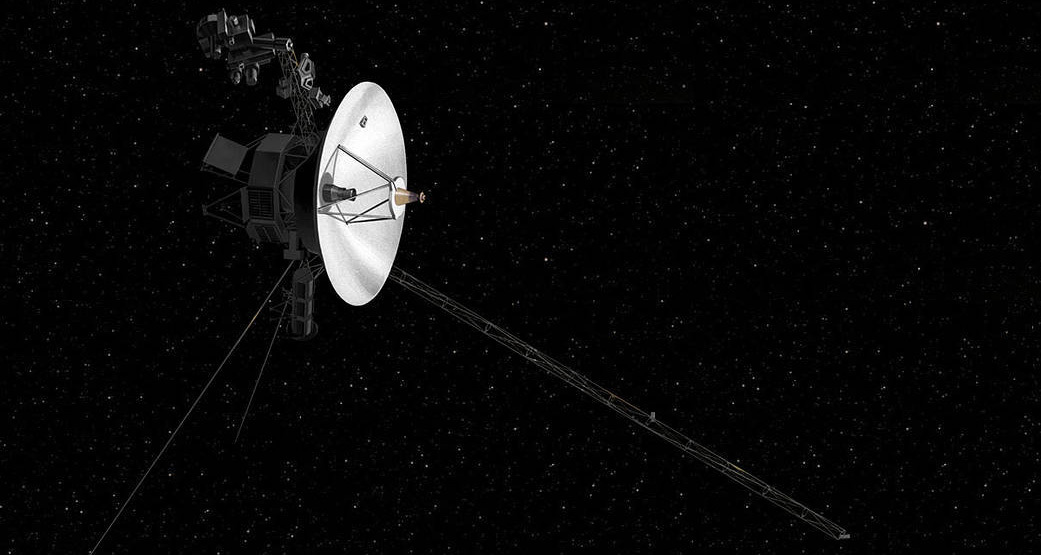The Voyager 2 NASA space probe was restored to its normal operations earlier this year after a two month period of partial dormancy caused by malfunctions in the probe’s power consumption.
As of March 3, 2020, the spacecraft’s five operating science instruments have been reactivated to their full ability and will continue to collect and return scientific data to Earth from their journey through interstellar space.
The anomaly revealed itself on Jan. 25, after Voyager 2 failed to perform an instructed maneuver in which the spacecraft rotates 360 degrees to help calibrate the probe’s magnetic-detecting instruments. The inexplicable malfunction left two of the spacecraft’s most power-sapping systems active simultaneously, which soon after triggered Voyager 2’s innate fault protection program to automatically shut down all active scientific instruments to conserve energy, according to NASA media relations contact Calla Cofield.
NASA engineers reacted as swiftly as possible, and managed to disable the two power-draining systems on January 28th. Voyager 2’s distance from its home planet, approximately 11.5 billion miles in total, slowed the mission team’s repairs to the spacecraft considerably. Communicated instructions from NASA traveling at the speed of light take roughly 17 hours to reach Voyager 2 in interstellar space, followed by another 17 hour wait for the probe’s response to return to Earth, according to NASA science writer Amanda Barnett.
This means that the probe’s engineers must wait 34 hours in total to examine if an instruction was delivered and carried out properly. Over the next several weeks after the incident, mission operators would continue the slow process of restoring the spacecraft to its regular operations. The spacecraft was declared stabilized and resumed recording scientific data on February 5th, and operations were declared fully
restored by NASA officials on March 3.
Voyager 2, alongside it’s twin Voyager 1, were both launched into space by NASA in mid-1977 to record never-before-seen data on the outer realms of our solar system. Voyager 2 holds the distinction of being the first and so far only spacecraft to collect close range data from all four of the gas giant planets. It performed it’s first flyby mission in July of 1979 when it entered the range of the gargantuan Jupiter. During
its tenure in the Jovian system, Voyager 2 collected never-before-seen pictures of the Red Giant and it’s moons, as well as discovering a 14th moon within Jupiter’s orbit, later named Adrastea, wrote Space.com writer Elizabeth Howell.
Voyager 2 continued it’s journey through the solar system by moving on to Saturn in 1981, where it recorded more detailed images of the planet’s rings and moons originally photographed by Voyager 1, writes Barnett.
Perhaps the most famous of Voyager 2’s expeditions through the cosmos was it’s encounters with the two outermost gas giants, Uranus and Neptune. Whereas Voyager 1 continued on it’s trajectory to escape the Solar System, Voyager 2 continued on to Uranus, becoming the first spacecraft to visit the planet.
During its monumental approach and flyby of the planet, the probe discovered 10 new moons, two new rings, and a bizarrely tilted magnetic field, Barnett wrote.
Voyager 2 also discovered an ocean of boiling water roughly 500 miles below the topmost cloud’s surface. The spacecraft utilized Uranus’s gravitational pull to slingshot itself towards its final planetary destination in 1986. Voyager 2 would arrive at the final gas giant three years later, making it the first and only man-made object to approach and flyby Neptune, wrote Barnett. In its final planetary encounter, the wayfaring space probe detected six new moons and four new rings.
It was during its flyby of Neptune that Voyager 2 performed it’s closest planetary approach of the entire expedition, entering within 3,100 miles of the blue planet’s cloud top surface, according to
Barnett. Voyager 2’s flyby of Neptune concluded the spacecraft’s planetary encounters after 12 years exploring the outermost regions of the solar system. The space probe continued its journey into the cosmos, eventually joining it’s sister probe as the second man-made object to enter into interstellar space on Dec. 10, 2018.
Currently, five of the original ten science instruments aboard Voyager 2 still function, with engineers expecting to begin turning off fields and instruments to conserve power sometime this year, according to Cofield.
Voyager 2 is expected to continue operating at least one scientific instrument until around 2025.
Photo courtesy NASA.




